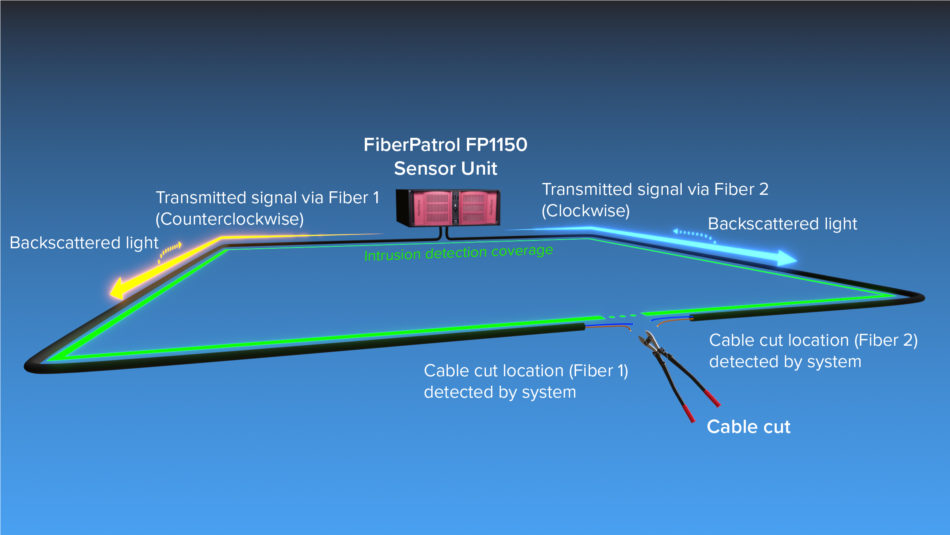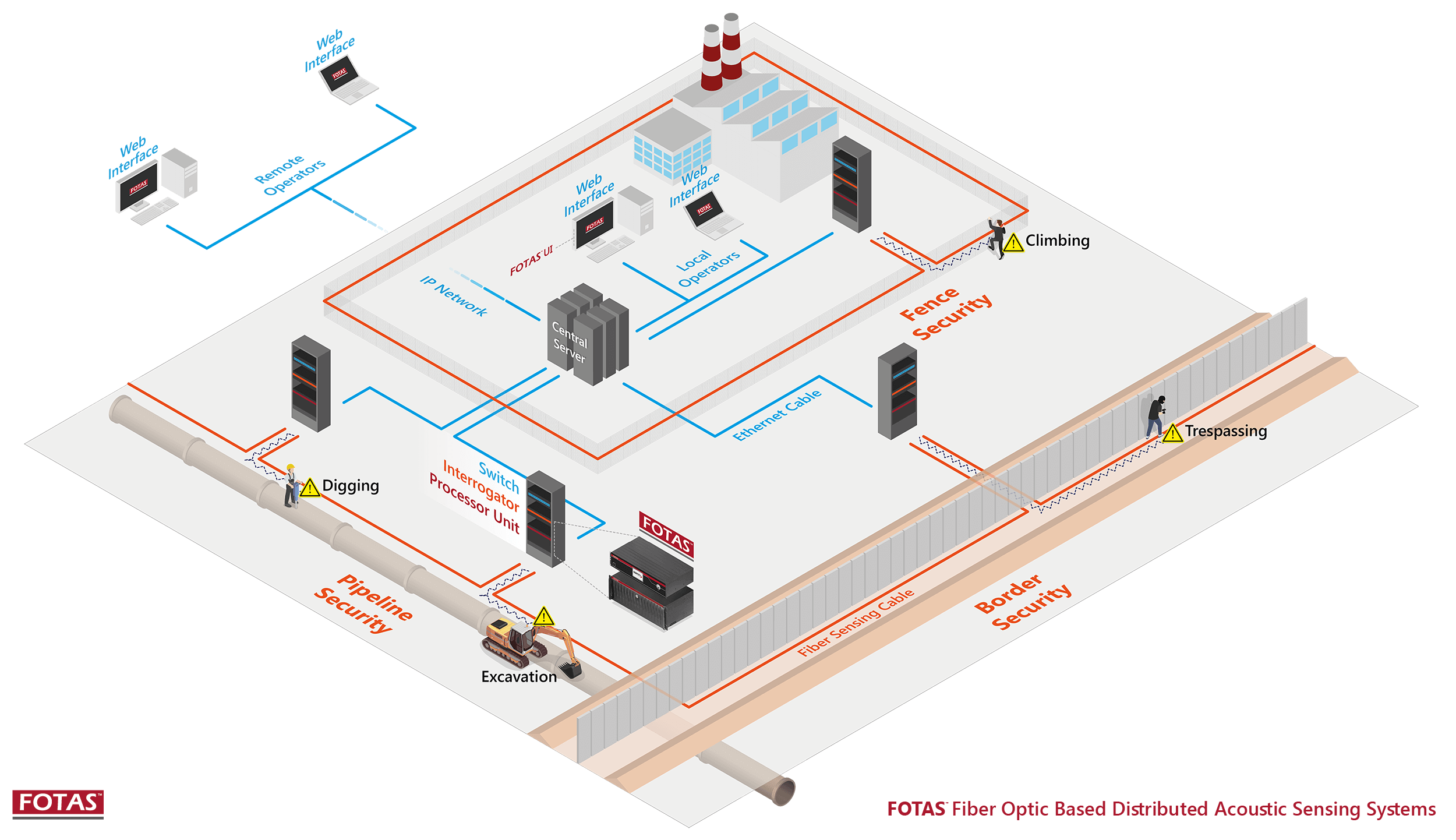The Evolution of Fiber Security System in Modern Security Solutions
The Evolution of Fiber Security System in Modern Security Solutions
Blog Article
The Ultimate Overview to Fiber Optic Safety Systems for Your Company
In an age where safety and security concerns are vital for organizations, comprehending the ins and outs of fiber optic technology can be transformative. This overview outlines exactly how incorporating fiber optic safety systems not only boosts information defense however likewise provides benefits like resistance to interference and real-time tracking abilities. As organizations assess their protection requires, it becomes critical to take into consideration the installment procedure and the newest innovations in the area. What certain elements should be focused on when choosing the ideal system, and exactly how can businesses guarantee they make the most educated choices?
Understanding Fiber Optic Modern Technology

The core of a fiber optic cable television is composed of a slim glass or plastic facility, surrounded by a cladding layer that shows light back right into the core. fiber optic security system. This design ensures very little loss of signal stamina, even over considerable ranges. There are 2 main sorts of fiber optic cable televisions: single-mode and multi-mode. Single-mode fibers are created for long-distance transmission, while multi-mode fibers appropriate for much shorter ranges, frequently used within buildings.
Optical fiber are not only faster but likewise much more safe than typical wiring. Their intrinsic resistance to electro-magnetic interference and the problem of touching into the signal without detection make them a favored option for services prioritizing data integrity and safety and security. As organizations significantly rely on protected and reliable interaction systems, understanding fiber optic technology comes to be necessary for educated decision-making.
Secret Advantages of Fiber Optic Protection
When considering safety alternatives for a company, the advantages of fiber optic systems are particularly compelling. Firstly, fiber optic technology provides exceptional data transmission speeds and bandwidth capacity, making it perfect for handling high-resolution video clip feeds from security cams. This ability makes sure that safety and security personnel obtain real-time data, improving overall action times to possible safety and security dangers.
Furthermore, fiber optic cords are naturally resistant to electro-magnetic disturbance, which can compromise the integrity of typical copper-based systems. This resistance makes sure that the data transmitted remains safe and uninterrupted, offering an extra trustworthy safety framework. Additionally, optical fiber are much less prone to physical damage, as they are made from glass rather than metal, decreasing maintenance prices and downtime.
Fiber optic systems supply boosted cybersecurity attributes, including security capabilities that shield sensitive information from unapproved accessibility. go to my blog Jointly, these benefits make fiber optic security systems a robust selection for companies seeking to enhance their safety and security procedures.
Installation Refine and Considerations
Thinking about the complexities involved, the installment procedure of fiber optic safety and security systems calls for cautious preparation and implementation. The first step involves a detailed website evaluation to identify ideal areas for cabling and tools. This assessment should take into consideration environmental elements, existing infrastructure, and prospective vulnerabilities.

In addition, the setup must conform with regional building ordinance and sector requirements. This might include collaborating with various look these up stakeholders such as structure supervisors, IT groups, and protection personnel to make certain seamless assimilation with existing systems.
Post-installation, rigorous screening is needed to verify system efficiency and identify any issues that might emerge. By prioritizing these considerations during the installment procedure, companies can guarantee a robust and efficient fiber optic protection system that satisfies their specific safety needs.
Most Current Innovations in Fiber Optic Protection
Current advancements in fiber optic innovation have substantially improved the abilities of safety systems for services. Among the most remarkable advancements is the integration of fiber optic sensors that can spot resonances and intrusions along the perimeter of a center. These sensing units give real-time tracking, enabling rapid reaction to prospective violations.
Additionally, the advancement of distributed fiber optic sensing modern technology permits for the continual monitoring of big locations with a single fiber cable. This technique not just decreases installment prices but additionally boosts the reliability of checking systems by eliminating the need for numerous, separate sensors.
Moreover, innovations in multiplexing this methods have actually made it possible for organizations to transfer large quantities of information over fiber optic networks, boosting the capabilities of video clip monitoring systems. High-def video clip feeds can now be sent over cross countries without loss of quality, ensuring that safety and security personnel have accessibility to clear and actionable info.
Lastly, using artificial knowledge (AI) along with fiber optic systems is transforming hazard detection. AI formulas can analyze data from fiber optic networks to recognize unusual patterns or habits, allowing for proactive safety and security steps. These technologies collectively represent a substantial jump forward in fiber optic safety modern technology.
Selecting the Right System for Your Business
Selecting the suitable fiber optic safety and security system for your company is critical for making certain ideal protection and satisfaction. To make an educated option, evaluate your details safety and security needs, thinking about aspects such as the dimension of your properties, the nature of your operations, and prospective vulnerabilities.
Begin by reviewing the degree of security required; for circumstances, risky settings might demand advanced systems with integrated surveillance and invasion discovery capabilities. Next off, consider scalability; as your service grows, your protection system should can increasing to fit boosted demands without substantial overhauls.
Additionally, explore the reliability and efficiency of different systems. Search for service providers with recognized online reputations and consumer reviews that testify to their service high quality. It's also a good idea to ask about the modern technology's compatibility with existing facilities, making certain a seamless combination procedure.
Verdict
In verdict, fiber optic safety systems offer a robust solution for boosting business protection facilities. The newest advancements additionally bolster the efficiency of these systems, making sure that services stay safe and secure and adaptable in an ever-evolving threat landscape.
Report this page